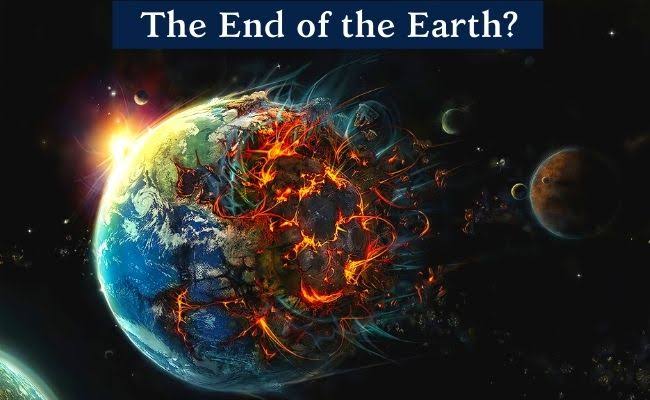The universe is a limitless, magnificent, uncharted region full of the big unknowable. The solar system, which contains the amazing planet we call home, earth, is located in this universe. The talk about the end of our beloved planet has fascinated people all across the world.
These ideas have inspired countless theories and science fiction novels and movies. From the sun engulfing earth to climate change, to an asteroid smashing into the earth and rendering the earth lifeless for countless years, all such theories definitely instil fear within our minds but are far from coming to reality.
OR IS IT SO?
NASA’s Prediction about the end of the world:
NASA has done In-depth research utilising cutting-edge computer simulations to pinpoint the exact moment when life as we know it will cease to exist on Earth. Their analyses’ findings have highlighted the pressing necessity for humanity to discover a new planet to call home in order to ensure the survival of our species.
The world’s atmosphere will be destroyed by solar radiation at some point, according to scientists. Scientists employ computer simulations to account for all potential scenarios because several different things could happen at the same moment and change the date.
They make the point that, despite the possibility that some presumptions are not accurate, it is crucial for science to consider all options.
Due to the computer model’s 400+ executions, experts may speak with precision regarding metrics. Almost definitely, deoxygenation will be brought on by solar activity. The time required to finish this process is 1,000,002,021 years.
Though this is just the risk of the end through solar activity, several other activities in theory can prove to be the end for all life on earth.
Related: Space Weather And Its Effects On Earth
Ways The Earth Can End:
1. Asteroid Impact-
The dinosaur extinction event, which occurred 66 million years ago, drastically altered the course of life on Earth. Smaller asteroid collisions do happen frequently, despite the rarity of massive ones. Simulations indicate that it would take a genuinely huge asteroid to burn away the oceans and destroy all life on Earth, making such encounters today incredibly unlikely.
Although asteroids still pose a threat to humanity, the likelihood of a catastrophic impact is minimal, so we should concentrate on preparing for more likely dangers.
2. Gamma-ray burst extinction
Astronomers believe that the Late Ordovician mass extinction on Earth may have been brought on by a gamma-ray burst (GRB). The most destructive explosions in the universe, GRBs have the power to obliterate at least half of the ozone layer on Earth in just 10 seconds. This would seriously affect food chains and lead to the extinction of numerous species. Additionally, GRBs disintegrate atmospheric nitrogen and oxygen, resulting in smog that blocks the Sun and may trigger a worldwide ice age. Although GRBs have only been seen in other galaxies, the repercussions of one occurring in the Milky Way could be disastrous for life as we know it.
3. The boiling of Earth’s oceans.
Because of a fortunate confluence of elements, including Earth’s size, mass, atmosphere, and distance from the Sun, life is able to exist on the planet. But as the Sun changes, it will warm up and grow, gaining increasing luminosity and strength.
The oceans will eventually boil, and the water vapour in the atmosphere will cause a catastrophic increase in Earth’s temperature. The experiment with sophisticated, differentiating species will come to an end when our planet is no longer habitable.
4. Reduction to a barren rock
Our Sun will exhaust its hydrogen fuel in 5-7 billion years, turning into a red giant. The Earth will be stripped bare and driven away from the Sun as it swells to roughly 100 times its current size, while Mercury and Venus will be ingested. The Earth will eventually become a scorched residue floating in space once the Sun eventually dies and transforms into a white dwarf.
Read more: What Would Happen If All Trees Disappeared From The Earth?
Conclusion:
The question of whether the world will end is irrelevant; the question is when, and our most cutting-edge scientific theories have predicted four scenarios in which it might. While the future beyond our control is inevitable, it’s up to us to affect the near-term destiny of Earth. We can guarantee the prosperity and success of humanity by applying the most cutting-edge scientific information and theories currently available. This is the ultimate vision of a scientifically aware society, and our greatest hope at postponing the first of these four ends – the extinction of humanity – for as long as possible.
